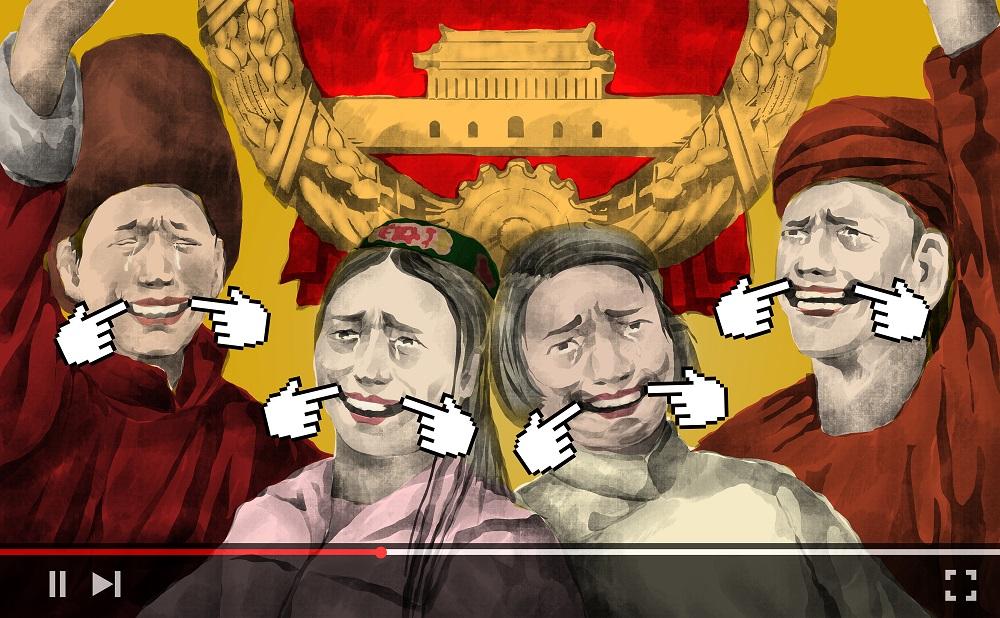
The Chinese party-state is obscuring human rights abuses and oppression in border provinces such as Xinjiang through an increasingly sophisticated propaganda and disinformation campaign. Our research—published today in a new ASPI report, Frontier influencers: the new face of China’s propaganda—found that China uses popular Uyghur, Kazakh and other minority influencers on YouTube to promote a whitewashed image of the regions.
We examined 1,741 videos published on 18 increasingly popular YouTube accounts featuring influencers from the troubled frontier regions of Xinjiang, Tibet and Inner Mongolia. For the mostly young and female ethnic-minority influencers, having such an active presence on a Western social media platform is highly unusual, and ordinarily would be fraught with danger in China.
But, as we reveal in our report, these ‘frontier influencers’ are carefully vetted and considered politically reliable. The content they create is tightly circumscribed via self-censorship and oversight from the private agencies they work for and the domestic video platforms they publish their videos on before they are republished on YouTube.
In one key case study, we show how frontier influencers’ content was directly commissioned by the Chinese party-state.
The videos show a standardised, secular and pristine image of these regions, with women who are modern, sinicised and show loyalty to the Chinese Communist Party. This subtle propaganda shows a vision of President Xi Jinping’s ‘beautiful China’, one that is scrubbed of politics and religion and instead shows an idyllic natural environment and innocuous elements of culture such as cooking or dancing.
In some of the videos, however, the influencers also explicitly push back on established international human rights abuse concerns. As one of the influencers puts it, ‘People are happy and all ethnics are living together harmoniously.’
For viewers, the video content appears to be the creation of these individual influencers, but is in fact what’s referred to in China as ‘professional user-generated content’, or content that’s produced with the help of special influencer-management agencies known as multi-channel networks (MCNs).
The channels are carefully produced to appear authentic, giving them more credibility than traditional party-state media, which can often be rigid and didactic. Yet the channels are produced by the MCNs, which, as businesses, are enmeshed with the CCP. Some of the MCNs have internal CCP committees inside them. All MCNs are required by Chinese law to ensure that their talent adheres to the values of the CCP and promotes its agenda.
By providing capital and resources, MCNs are able to ensure the continuous production and output of content from the creators’ channels, helping them to grow into viable online brands. It also means that they are able to churn out ‘positive’ content about these regions in order to shape online political discourse beyond China’s borders, particularly on those topics that have the potential to disrupt the CCP’s strategic objectives.
As previous research by the Brookings Institution has shown, search-engine algorithms tend to prioritise fresh content and channels that post regularly. That gives Chinese party-state media, CCP-friendly foreign vloggers and the ethnic-minority vloggers we examine in our report a distinct advantage over, for example, one-off, thoroughly researched and highly credible video reports about human rights abuses in Xinjiang by the New York Times.
Because YouTube is blocked in China, creators based in the country are not normally allowed to monetise their content on the platform. But concerningly, the MCNs have agreements with YouTube that allow them to monetise their content, resulting in a situation where the video-sharing site is effectively subsiding Chinese state-backed propaganda and disinformation efforts.
The frontier influencers represent, in the words of one Chinese propaganda expert, ‘guerrillas or militia’ fighting on the flanks in ‘the international arena of public opinion’, while party-state media or the ‘regular army’ ‘charge, kill and advance on the frontlines’. Platforms like YouTube should not be providing this militia with their ammunition.